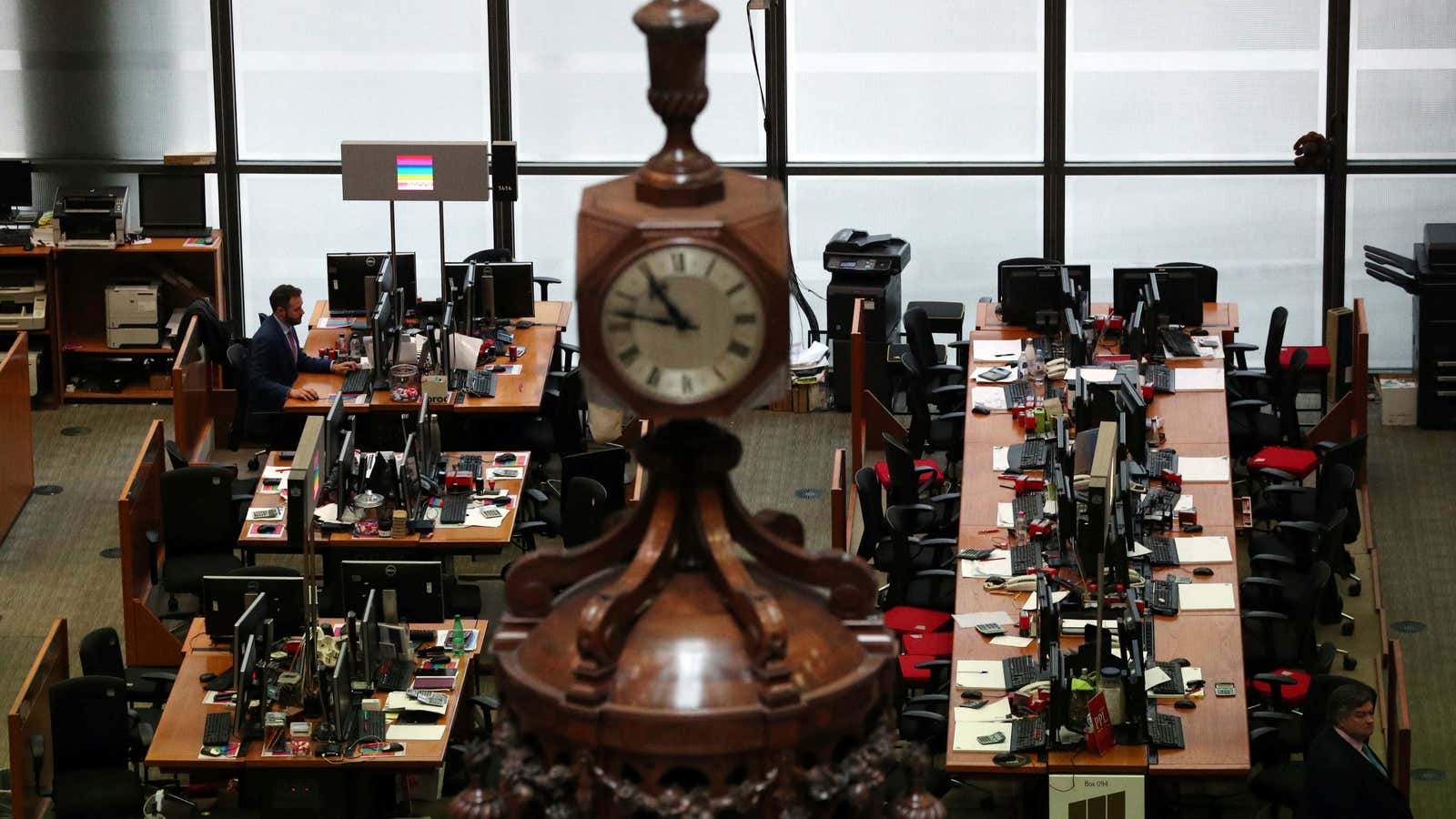It has become conventional wisdom that those with the most data will rule the modern economy. The Economist argues data are the most valuable commodity, while reports from McKinsey marvel at what data make possible. Large firms with access to the most customers and their data appear to have an unfair advantage.
Bruce Carnegie-Brown, chairman of Lloyd’s of London, the 331-year old insurance company, disagrees. Data have always been the lifeblood of the insurance industry whose business model depends on measuring risk as accurately as possible. But he argues the biggest advantage doesn’t belong to the companies with the most data, but the ones with the expertise to use it—and, more importantly, who know what data not to use. “Often we have too much data,” he says. “The skill is picking the right data.”
Measuring the immeasurable is what made Lloyds of London is famous. It is known for insuring what no one else will, from Betty Grable’s legs, to Dolly Parton’s breasts and football player’s Troy Polamalu’s hair. It also insures some larger, unusual, and extreme events—Lloyd’s insured the World Trade Center prior to Sept. 11, 2001—and are on the hook for claims from California wild fires to cyber crime. All of these are hard to value because the events that require a payout are either extremely rare or have never happened before. There aren’t thousands of Troy Polamalus to estimate the odds of a bad haircut. Most insurance companies stick to common problems like car accidents, house fires, or deaths, which have lots of data and are relatively easy to measure.
It is an extraordinary time for risk measurement. On the one hand we have more data than ever. On the other, in a fast changing world full of unprecedented events, data from the past may not tell us much about the future. This is why Carnegie-Brown believes expertise can matter more than having all the data. Take climate risk, which Lloyd’s underwriters must put a price on. A climate disaster is hard to predict because a big climate event is relatively infrequent (compared to a car accident) and at the same time the climate is changing. Last year, for example, Lloyds insured against wildfires in California and underestimated how bad they would be. Carnegie-Brown explains:
Climate is interesting. Because we’ve had two years of severe loss that is climate related. You get lots of people who challenge you and say your models must be wrong, but climate is a long-term thing and you can have two years of weather that is not indicative of changing climate. Part of the challenge is how frequently do you update your models for recent data, versus taking into account longer and longer data sets to take out the volatility in these outcomes, but there’s no doubt that if something dramatic has happened recently in climate recently, our models probably are under-predicting because we are using very long data sets. That’s part of insurance is how to make these judgments.
The future of data, at least when it comes to insurance, will also feature regulatory constraints on what information insurers can use. In their ideal world, insurance companies would only like to sell to low-risk customers who won’t actually need insurance. In the past it was hard to tell who was high-risk and who was low-risk. But better data makes it possible to tell good drivers from bad or identify who is likely to die young or flood their basement. More data means insurers can offer cheap policies to low-risk customers and expensive (sometime unaffordable) policies to high-risk people. Carnegie-Brown anticipates this will invite more regulation that will prevent under-writers from using certain data such as gender, age, or data that correlates with race. This is already the case in Europe where the European Union forbids gender price discrimination, even though women are statistically better drivers and live longer.
Of course a new changing world also creates new opportunities for those who know how to put a price on the unknowable. I asked Carnegie-Brown what new markets are out there for intangibles that can’t be measured, and he said he’d like to see reputation risk policies. If a company is the victim of a cyber attack—say a financial firm who suffers a data breach—the loss of reputation and trust often costs more than recovering data and paying damages. But there is no reason to stop there. Social media means we all live with reputation risk. A bad tweet can cost you your job or book contract. In theory, a company like Lloyd’s can insure against cancel culture. “It’s not a bad thought,” Carnegie-Brown gamely said to my suggestion,
